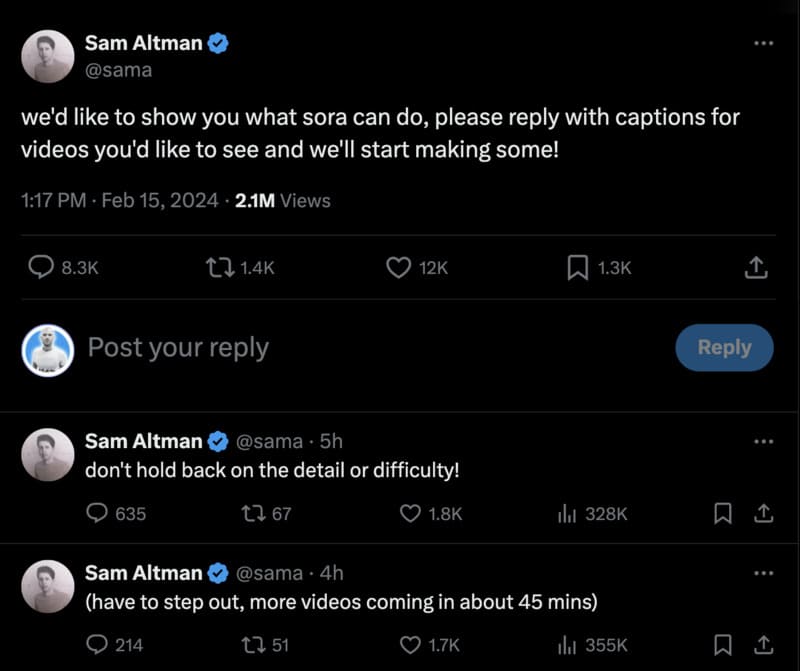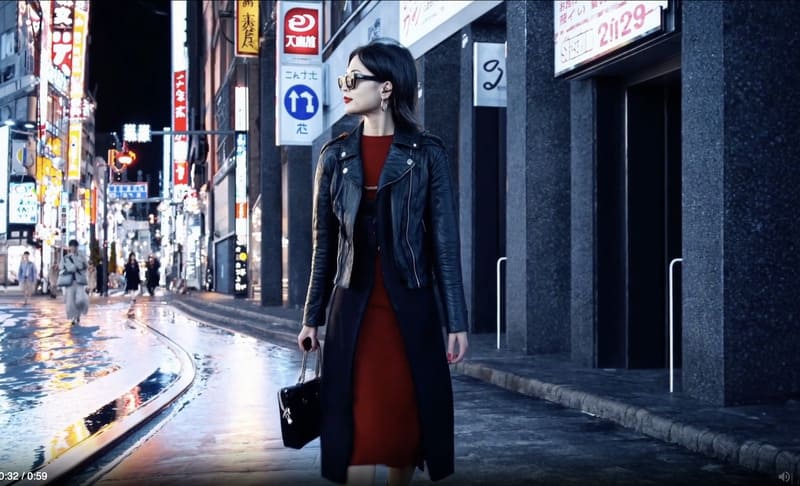OpenAI recently unveiled Sora, a major innovation in the field ofartificial intelligence, marking a giant leap in the creation of AI-generated video content.
Sora is able to create videos based on text descriptions (prompt) announced by Sam Altman on X (ex Twitter) on February 15, 2024.

It represents a significant advance in the field of generative AI, succeeding innovations such as GPT chat, GPT-4 Vision or DALL-E.
Sora can generate videos of up to 60 seconds, featuring detailed scenes, complex camera movements, and multiple characters expressing vibrant emotions

Sora is able to transform text into realistic and imaginative videos, marking a significant advance in the field of generative artificial intelligence.
Sora's generation of text-based videos opens up new creative horizons, although the technology still requires adjustments for seamless interpretation and management of complex scenarios.
Sora isn't limited to creating videos from scratch; he can also animate still images and extend or complement pre-existing videos.
This feature demonstrates Sora's flexibility in expanding creative possibilities, although consistency in extending videos still needs to be perfected.

Sora excels at producing videos that combine realism and imagination, with a particular focus on visual detail and motion for Generate stories using AI realistic.
Sora's ability to fuse realism and fantasy is impressive, offering a wide range of potential applications, despite the ongoing challenges in simulating complex physical events and human emotions.

Sora aims to understand and simulate the physical world in motion, an ambitious goal that highlights its potential as a step towards general artificial intelligence.
1. Material interactions: Sora doesn't have a perfect handle on the interactions between different materials, like glass breaking on a table.
2. Basic consistency: Coherence issues, such as the unwanted reversal of a runner's direction or the unexpected appearance of characters, may occur.
3. Combined problems: Combining multiple problems, such as the appearance of unwanted objects or physical problems, remains a challenge.
Despite its notable advances in the generation of text-based videos, Sora has limitations in terms of physical simulation and narrative coherence. These aspects, while presenting challenges, also highlight areas of potential improvement for future iterations of the model.
OpenAI takes several important security measures before making Sora available in its products, stressing the importance of ethics in AI development.
OpenAI's efforts to keep Sora safe and ethical are commendable, but continued regulation and monitoring will be crucial to prevent abuse and ensure the technology is used responsibly. Collaboration with policy makers, educators, and artists is critical to navigating the ethical and societal implications of creating AI-generated video content.
At present, specific information on Sora's pricing has not been disclosed. OpenAI launched Sora in a test phase, accessible to some researchers and visual creation professionals to gather feedback and assess potential risks before possible commercialization.

Runway ML is a comprehensive AI platform that makes it easy to explore, create, and deploy artificial intelligence models for a variety of applications, including creating moving images.
Runway ML stands out for its versatility and its wide range of AI models, offering almost unlimited possibilities for creating moving images and other creative projects. Its strength lies in the variety of tools available and in its user interface that makes AI accessible to everyone even non-programmers.

Lumen5 is a video creation platform that uses AI to help users transform text-based content into engaging, animated videos that are ideal for content marketing and social media.
Lumen5 shines with its ability to automatically convert text into animated videos, making it a valuable resource for content marketing and social media.
READ MORE >> Try Lumen5 100% Free

Deep Dream Generator is an AI platform that allows images and photos to be transformed into animated works of art, using deep learning techniques to apply complex visual effects and create unique animations.
Deep Dream Generator is ideal for users looking to experiment with unique visual effects and transform images into animated works of art.
Access to Sora is currently restricted to a select group including researchers, visual artists, designers and filmmakers, invited by OpenAI or part of their Red Team. There is no public application process for beta access.
Sora transforms text prompts into realistic and imaginative video scenes using a delivery model. He starts with a video that looks like static noise that he gradually refines to match the prompt. This allows it to generate complex videos with multiple characters and detailed backgrounds. It can also animate still images or extend existing videos.
While Sora marks a significant advance in AI-generated video content, it has limitations. It can have trouble simulating complex physics, understanding some cause-and-effect scenarios, and maintaining spatial details like left and right orientation. Additionally, it may encounter difficulties with accurately sequencing events over time.
Sora represents an impressive advance in the field of artificial intelligence and the creation of video content.
Its ability to generate detailed, realistic videos from simple text descriptions opens up new possibilities for content creators, marketing professionals, and filmmakers.
However, the ethical implications and risks of misinformation associated with such technology require particular attention and adequate regulation. In the meantime, the Sora testing phase is a crucial step in assessing these risks and refining the tool before possible wider availability.
